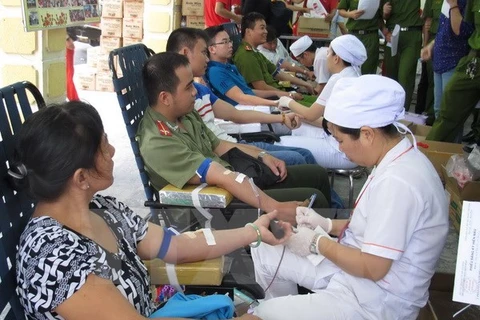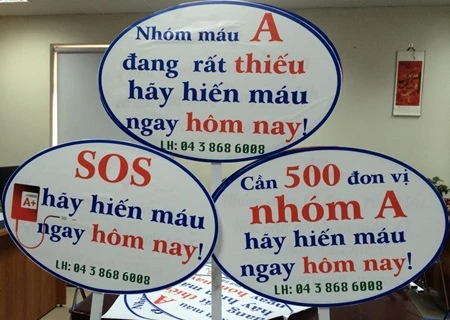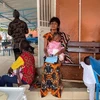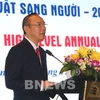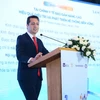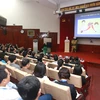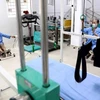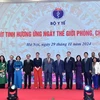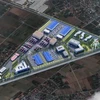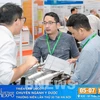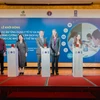The first national workshop on thalassemia - a genetic blood disease - and the second Pan-Asian Conference on Haemoglobinopathies and Rare Anaemias are taking place in Hanoi.
Nearly 800 domestic and international scientists are participating in the events on September 24 and 25, hosted by the National Institute of Haematology and Blood Transfusion ( NIHBT) , the Vietnam Thalassemia Association (VNTA) and the Thalassaemia International Federation (TIF).
More than 50 scientific reports are being presented at the domestic event while 40 others will be updated at the regional function, highlighting blood disorder diseases; thalassemia detection, treatment and prevention; and patient care programmes.
Director of the NIHBT and President of the VNTA Nguyen Anh Tri highlighted haemoglobinopathies and rare anaemias are some of the most common genetic diseases in the world, including thalassemia.
The disease affects up to 71 percent of nations globally, he said, adding that around 7 percent of pregnant women are carriers of the thalassemina gene and some 1.1 percent of married couples face the risk passing on the disease to their children.
It is found most commonly in the Mediterranean, the Middle East and the Asia-Pacific region, including Vietnam.
Globally, about 90 million people are carriers of the thalassemia gene (making up 1.5 percent of the world’s population), half of whom are from Southeast Asia.
Each year, the world sees around 60,000-70,000 children born with the disease, Tri said.
In Vietnam, it is estimated more than 10 million citizens are carrying the gene, with the highest rate in some ethnic groups such as Stieng (63.9 percent), Ede (32.2 percent), Khmer (28.2 percent) and Muong (21.74 percent).
About 20,000 people have the disease and need treatment nationally, he said, adding that close to 2,000 children are born with the disease every year.
Thalassemia is a form of anaemia, a genetic blood disease a child can inherit if one or both of his/her parents carry the mutant gene. The risk is higher if both parents have it.
The disease is not always symptomatic, but can be identified through testing. It is caused by variant or missing genes that affect how the body makes haemoglobin, the protein in red blood cells that carries oxygen.-VNA


